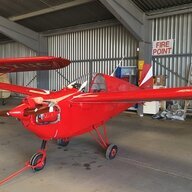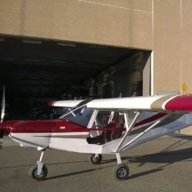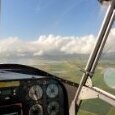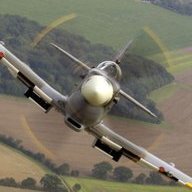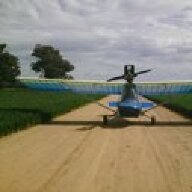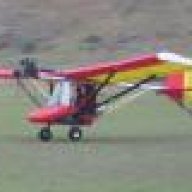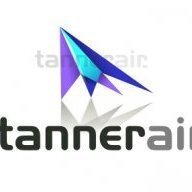Leaderboard
-
in Classified Comments
- All areas
- Videos
- Video Comments
- Video Reviews
- Quizzes
- Quiz Comments
- Marker
- Marker Comments
- Books
- Bookshelves Comments
- Bookshelves Reviews
- Bookshelves
- Movies
- Movie Comments
- Movie Reviews
- Aircraft
- Aircraft Comments
- Resources
- Resource Comments
- Tutorials
- Tutorial Comments
- Articles
- Article Comments
- Classifieds
- Classified Comments
- Events
- Event Comments
- Blog Entries
- Blog Comments
- Files
- File Comments
- File Reviews
- Images
- Image Comments
- Albums
- Album Comments
- Topics
- Posts
- Status Updates
- Status Replies
-
All time
-
All time
January 7 2011 - April 4 2025
-
Year
April 4 2024 - April 4 2025
-
Month
March 4 2025 - April 4 2025
-
Week
March 28 2025 - April 4 2025
-
Today
April 4 2025
- Custom Date
-
All time
Popular Content
Showing content with the highest reputation since 07/01/11 in Classified Comments
-
Is the asking price just for the strip or the whole of Tassy ? 😁 Always wanted my own island. Merry Christmas6 points
-
All good info. I just saved that file and this page for future reference when we get to that point. We're getting requests from Canada and around the Carribean/Central America so far, but no Australia yet. Thanks for that! I've got some good friends from Australia, Canberra area, that were just here visiting in the states. They just left Tuesday to head back home. On another note, we setup a new dealer in South Carolina today with their first 5 units! It's fun to be building something new after 19 years of doing the same thing. Race car stuff was a fun business, but I've always like making the baby more than I liked changing the diapers, ya know? 😉4 points
-
Hi Skippy, We had quite a long discussion on this in a previous thread. A transponder does not know where it is. It simply replies when “pulsed” by a radar system. The radar system (ATC or another aircraft with TCAS) then works out where the transponder and thus the attached aircraft is. The transponder also returns some information. In Mode A it sends the Squawk code In Mode C it sends the Squawk code plus altitude In Mode S it sends Squawk code and Aircraft ID plus altitude if in ALT mode ADSB is an ad-on system that piggybacks on the transponder and uses it to transmit additional information, like the current position of the aircraft. ADSB needs to know where it is, so must have a GPS input. Your transponder may support ADSB, but without a GPS input, it will not transmit ADSB data. The Skyecho is a standalone ADSB Out transmitter, and also an ADSB receiver. You can configure the Skyecho to act as a receiver only, and not transmit your position. If you have compatible software on a tablet, phone or EFIS you can display the traffic picked up by the Skyecho. Note: The Skyecho will only “see” aircraft fitted with ADSB OUT. So, Leave the transponder ON and use a tablet to display traffic picked up by the Skyecho. Other aircraft with ADSB IN will see your aircraft, because the Skyecho is transmitting ADSB OUT. You will only see non ADSB traffic if you have an internet connection while flying and the application you are using is displaying traffic sent to it through the internet from the people that provide the application.3 points
-
Never understood that HS. To me didn’t make aerodynamic sense, hence the requirement for vortex generators. I fitted a Savannah stabiliser and elevator. Never had a problem in the flare! Also fitted streamlined struts!3 points
-
Also include where it is located. How far it has to be relocated will have a serious effect on how much it will cost the purchaser.2 points
-
Dean, You will get more interest if you can list some proper details of the build and a expected price. We should not have to "fish" for basic info. If you want a sale esp to a pilot that will complete it, you need to attract is with details.2 points
-
2 points
-
2 points
-
2 points
-
Yes full tanks generally better for less condensation and fume build up. But the Gazelle is limited to less than 10 litres per tank, if you hangar it and are folding the wings. I think because normally she sits on her tail skid wings folded, (although I have a tail stand which keeps it more level). This tail sit causes the greater than 10 litre fuel level to go past the filler caps which may leak or push fuel out the cap tank vent pipes located on the filler cap. In a level attitude, this does not occur. Also, I try only run Mogas, so have to use 10 litre fuel containers to refuel, so not easy to always fill tanks after every flight.2 points
-
Yes don, and it was a nice one too. I put the ad up for someone else . He wants to set up a small auf type training school. Great idea if it happens. The xairs are great but not certified.2 points
-
Hi Skippy, I'm still not sure if you have your Trig actually set up and connected to a certified GPS so ADSB OUT is enabled. By default it isn't. IF it IS set up with ADSB OUT then you would have to disable the ADSB OUT in the Skyecho and just use the ADSB IN with your EFB. This is a big waste of money - you can buy just an ADSB IN device from UAvionix called a PingUSB for about $475 (half that with rebate). This will display ADSB IN on your EFB. IF you don't have ADSB OUT set up on your transponder then the transponder can still be (and should be, as others have pointed out) turned on as it fulfills a different function from the Skyecho (as outlined previously) by communicating your info to ATC when interrogated. The Skyecho will broadcast your position etc to other aircraft equipped with ADSB IN directly. Its signal is not that strong, but it is fine for recreational aircraft, in my opinion, as its range is up to about 40NM according to UAvionix. I think that's if you have it positioned in an ideal location - my experience with my Skyecho in my Savannah is about 25NM, but that's still OK for me as I usually have an aircraft displayed on my AVPlan a long time before I spot it visually. (e.g. If my calculations are correct - if 2 aircraft were each travelling at 120kts directly towards each other if they were 20nm apart they would have 5 minutes before colliding, so that's a reasonable time to take evasive action). HTH Cheers, Neil2 points
-
Another last blurt! To answer your original question, the Skyecho does not interface at all with your transponder. It is a standalone transmitter that does not need a radar system to trigger it. If you are out the back of no-where, out of radar range, your transponder will go to sleep unless it is also capable of, and in ADSB OUT mode. So no-one will know where you are. If you have the Skyecho, it will be transmitting your position for any other aircraft or ground station with ADSB IN capability to pick up. (Up to about 20 miles)2 points
-
Skippy, One last blurt. By law, if you have a transponder it must be switched on in flight. If it is out of the calibration checks required every two years you can set it to Mode A (commonly shown on the transponder panel as ON).2 points
-
You might want to get a handle on the fact that Australia uses 240V power, not 110V, it has different power plugs and wiring as compared to the U.S. - and all containers for carrying fuel in vehicles in Australia must be approved by Govt authority, under the Transport of Dangerous Goods Act - with each State having slightly different regulations, as regards fuel transport in vehicles. In addition, all containers carrying Hazardous or Dangerous goods must be labelled under the GHS (Globally Harmonised System) labelling regulations. Most Western countries (including the U.S. and Australia) are party to the GHS labelling system. This system clearly identifies the hazardous substance with pictograms on the containers or vessels and also provides readily provides MSDS information for first responders to fires and crashes. 250 litres is the maximum allowable volume to be carried in private vehicles in Australia - above that amount, you need to have a commercial Dangerous Goods transport permit, and your vehicle must carry standardised U.N.-markings - the Dangerous Goods diamond-shaped warning plates, front and rear. Documentation for the DG load must also be carried in the vehicle, relating to the supplier and carrier, and responsible persons contact details. This type of DG load is referred to as a "placarded load". 50 U.S. gallons is approximately 190 litres. Note that the 250 litre transport limit for vehicles in Australia, includes the fuel in your vehicle fuel tank. A fuel transport container on wheels may not get approval to transport in a vehicle in Australia, as fuel transport containers are required to "be properly secured" in a vehicle. Adding substantial tie-down points to your Fuel Mule would be advisable, to ensure it received official transport approval in Australia. There is an important distinction between petrol fuels (avgas and gasoline) and diesel-based fuels in Australia. All fuels with a flashpoint below 60°C are classed as "Flammable liquids", but fuels based on petrol are classed as Combustible liquids, because their flashpoint is around -43°C, and they will ignite easily from a single spark, at well below room temperature, thanks to the large volume of volatile fumes these fuels produce. Diesel or kerosene-based fuels do not pose such a severe flammability danger as petrol-based fuels, because they do not produce the same level of volatile fumes as petrol-based fuels. If you own a boat, you are no doubt well aware of the dangers of refuelling with volatile fuels, and the need to avoid containment of the fumes produced. I have seen an entire major fuel storage depot burn to the ground, simply because a customer refuelling his car and caravan (trailer home) out front of the depot (via a depot fuel bowser), spilled some petrol, due to overfilling his (petrol) fuel tank. The petrol fumes wafted into his caravan, where he'd left his LPG fridge burning. The petrol fumes ignited via the gas burner flame, the caravan went up in flames, the car joined it, then the fuel depot caught fire, too! It ended up a multi-million dollar fire, and it wasn't even in a built-up urban area, it was in a small country town, where the depot was located in an isolated industrial area of town. A strong, steady wind aided the fire to take hold rapidly. There's a general official attitude discouraging the transport of any more than about 50 litres of petrol-based fuels in vehicles, in Australia. This is because of the severe level of danger involved in the case of a vehicle crash, where a vehicle is carrying more than about 50 litres of petrol-based fuels, in portable containers (or container). Fuel tanks built into vehicles have a major level of protection built into their design, such as their location, plus protective shields around the tank. This is not the case with volatile fuels being carried in bulk containers in vehicles. Finally, service stations (gas stations) in Australia will generally not allow the filling of portable fuel transport containers in vehicles, due to static ignition fire potential. All portable fuel-carrying containers must be removed from the vehicle and placed on the ground for filling, and the container size being filled is not allowed to be larger than 25 litres.2 points
-
"The engine is brand new, only run for a minute or so to verify starting etc" Think it might help to explain the corrosion No offence but I doubt many people would buy an engine described as brand new but looking like its been left outside in the rain for weeks2 points
-
Laziness sadly and paid the ultimate price; terrible. My method is DI / walk round, drain tanks (fuel into mower) then in, checks and start etc.2 points
-
Not paper fuel filter element so will handle water if any there. I use them and filter of choice by the Skyranger and Nynja manufacturer in UK.2 points
-
2 points
-
2 points
-
Mmm, if it does indeed cruise at 150knots indicated on 80hp that would be beyond Vne? Perhaps the ASI came from a different aircraft.2 points
-
2 points
-
1 point
-
Provide hub dimensions, diameter, thickness, diameter and hole location.1 point
-
If you can also clarify useable weight and MTOW so we can work out if we need to lose 25Kg's as well. (LOL)1 point
-
1 point
-
1 point
-
1 point
-
Europa is not a wing fold - its similar to a glider. The main spare overlaps & is secured inside the fuselage/cockpit. It's not so easy to do - the few who actually go down this track, build a jig or two, so that the wings can be removed/installed by one person. You will also need a custom designed trailer - started down this track with a 1975 Viscount Supreme caravan - used it to pick up my Sonex. Performance wise, the Europa and FS Storch are pretty much at opposite ends of the envelop/handling characteristics - interesting choices.😈1 point
-
Got a bit of time in Eurofoxes, and they're nice aeroplanes. Love the strength of the Europa though (always loved the design - way ahead of its time).1 point
-
I know that Mate. Presumably he is trying to save money and wood is safe(r). and you can make your own. Nev1 point
-
OT That used to be the way many Aeroclubs did it. If you had a Hangar fire it would be a big one. With bigger stuff you only have the required fuel in board which is only rarely FULL tanks. Even with the DC9-20 which has a small endurance I think I only ONCE ever took off full. . You are usual Weight limited and It may have been when I noticed DC-9 Captains hair turning prematurely WHITE I considered moving onto something with less pressure on the driver. To fly It was a Cowboy Pilot's dream machine. Nev1 point
-
Mine had a completely re-built wing, blue head 582, rear bulkhead,doors etc,etc. Flew well and safe.1 point
-
I love Thrusters and don't want to sound like a Debbie downer but getting a Thruster that is flying school compliant, big ask.1 point
-
1 point
-
Skip , I think from this discussion , you have the Trig 'On' and presummably squark 1200 , this only triggered by ATC radar or aircraft TCAS . The SkyEcho transmits you position to other ADSB_In users and receives ADSB_In to display on your Nav tablet . that's my take on it .1 point
-
Yes, the forum is based in and run from Australia, but users from all countries come here, and are welcome if they provide content that is interesting, informative, and which adds to our combined aviation and engineering knowledge. I wish you well with your product, it looks good, and is likely to be acceptable in many countries. I just felt the need to address the issues associated with private (i.e. non-commercial) fuel transport within Australia and its territories, and point out the risks associated with highly combustible fuel transport, which risks are regarded as serious ones by the relevant authorities here. Fuel transport containers must meet the relevant Australian/New Zealand Standard, which is - "AS/NZ 2906: Fuel containers – portable – plastic and metal". Below is a link to one of the Australian States, Workplace Health and Safety (equivalent to OSHA) guidance booklets, for the storage and transport of flammable and combustible liquids. https://www.worksafe.qld.gov.au/__data/assets/pdf_file/0024/22866/guide-for-flammable-and-combustible-liquids.pdf All of our legislation and regulations regarding fuel transport and storage, are centred around risk reduction and education of end-users, to minimise accidents and disasters.1 point
-
Some very good information here regarding Australia. I'm curious, is this primarily an Australian forum? It may be a little while before we're shipping anything that far, and we may have to adpat the product for regulations there if/when that time comes. We're just getting started, and we have shipped outside the US (once), but haven't shipped to Australia yet. Though we do intend to take advantage of the treaty with the US regarding international patents, extending our patent to Australia and other countries. Here in the US we have different regulations and requirements, and a significant amount of our efforts bringing this to market were to ensure we stayed inside those lines, including consulting with Intertek, a National Research Testing Laboratory (NRTL). Here in the US the placarding requirement is a function of HAZMAT regulations, and only come into effect above 119 gallons, where a HAZMAT registration by the end user, and placarding for hazardous materials, comes into play. Thanks for the info!!!1 point
-
1 point
-
No builder's manual. But there seem to be HUNDREDS of sheets of A1 sized plans. And there is a very active Sonex online group where you can get all the help your heart desires.1 point
-
There is no builders manual AFAIK. You get dozens of paper plans and a virtual wing and a prayer.1 point
-
1 point
-
"............certified aircraft (this is not an S-LSA) so the engine can run on condition after it reaches TBO of 2000 hours or 15 years calendar. No mandatory engine replacement at 2000 hours or 15 years or being forced into E registration for this aircraft!" I do not think this statement is correct. First it is not a Certified aircraft - this is a GA term/concept. It may be factory built and factory certified but this is not the same as being a Certified Aircraft. Certainly you may indeed be able to go past the 15 year/2000hr TBO to "on condition" (conditions apply) BUT as I understand it the aircraft can not be used for hire/reward, if this option is chosen.1 point
-
Could you add the engine hours, year built and the hours for the DUC prop to the description, Thanks.1 point
-
Derek, your to young to stop flying,i am 12 months away from finishing my build and turn 76 this year good health so intend to keep flying good luck with your sale1 point
-
In my hanger at 35 11.5S 149 38.8E; NSW Southern Tablelands ~7nm south of Tarago. My airstrip is pretty obvious on satellite photos and is marked on Google maps. Mark1 point
-
He has given us some photos, but they are from 2011 and too small to be any use - about 18kb. This is from the RAAus register. He let it lapse by non payment, after the wing was repaired and it was flyable. No idea why, although he was getting ill at the time. I am still trying to find the date of the prang. That may be the last time it flew. I may have some historical photos, but it pre-dated the RAAus accident database on-line.1 point
-
1 point
-
the thing that makes a 582 special is it is built like a brick outhouse and very reliable. its the aero version of a 583 snowmobile engine. detuned from 100 hp to 641 point
-
1 point




